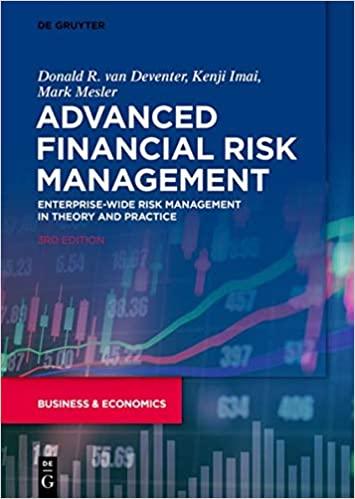Answered step by step
Verified Expert Solution
Question
1 Approved Answer
The Suzy Q Muffins Company has the following financial statements, which are representative of the company's historical average. Income Statement Sales $696,900 Expenses 550,551 Earnings
| The Suzy Q Muffins Company has the following financial statements, which are | |||||||
| representative of the company's historical average. | |||||||
| Income Statement | |||||||
| Sales | $696,900 | ||||||
| Expenses | 550,551 | ||||||
| Earnings before interest and taxes | 146,349 | ||||||
| Interest | 6,969 | ||||||
| Earnings before taxes | 139,380 | ||||||
| Taxes | 69,690 | ||||||
| Earnings after taxes | $69,690 | ||||||
| Dividends | $34,845 | ||||||
| Balance Sheet | |||||||
| Assets | Liabilities and Shareholders' Equity | ||||||
| Cash | $17,423 | Accounts payable | $17,423 | ||||
| Account receivable | 34,845 | Accrued wages | 3,485 | ||||
| Inventory | 52,268 | Accrued taxes | 6,969 | ||||
| Current assets | 104,535 | Current liabilities | 27,876 | ||||
| Capital assets | 243,915 | Notes payable | 24,392 | ||||
| Long-term debt | 52,268 | ||||||
| Shareholders' Equity | |||||||
| Common shares | 69,690 | ||||||
| Retained earnings | 174,225 | ||||||
| Total liabilities | |||||||
| Total assets | $348,450 | and shareholders' equity | $348,450 | ||||
| Suzy Q Muffins is expecting a 20 percent increase in sales next year, and management is concerned about | |||||||||||||||
| the company's need for external funds. The increase in sales is expected to be carried out without any | |||||||||||||||
| expansion of capital assets; instead it will be done through more efficient asset utilization in the existing stores. | |||||||||||||||
| Of liabiilities, only current liabilities vary directly with sales. | |||||||||||||||
| a. Using the percent-of-sales method, determine whether Suzy Q Muffins has external | |||||||||||||||
| financing needs.(9 marks) | |||||||||||||||
| % expected increase | 20% | ||||||||||||||
| Profit margin | |||||||||||||||
| Payout ratio | |||||||||||||||
| Change in sales ($) | |||||||||||||||
| Spontaneous assets as % of sales | |||||||||||||||
| Spontaneous liabilities as % of sales | |||||||||||||||
| Does your company require funds? Explain based on your calculations (2 marks): | |||||||||||||||
| Change in assets | |||||||||||||||
| Change in liabilities | |||||||||||||||
| Change in retained earnings | |||||||||||||||
| External funding needed | |||||||||||||||
| b. Prepare a pro forma balance sheet with any financing adjustment made to notes payable. | c. Calculate the current ratio and total debt to assets ratio for each year ( 4 marks). | ||||||||||||||
| (8 marks) | Discuss your findings (4 marks) | ||||||||||||||
| Balance Sheet | |||||||||||||||
| Assets | Liabilities and Shareholders' Equity | ||||||||||||||
| Cash | Accounts payable | ||||||||||||||
| Account receivable | Accrued wages | ||||||||||||||
| Inventory | Accrued taxes | ||||||||||||||
| Current assets | Current liabilities | ||||||||||||||
| Capital assets | Notes payable | ||||||||||||||
| Long-term debt | |||||||||||||||
| Shareholders' Equity | |||||||||||||||
| Common shares | |||||||||||||||
| Retained earnings | |||||||||||||||
| Total liabilities | |||||||||||||||
| Total assets | and shareholders' equity | ||||||||||||||
Step by Step Solution
There are 3 Steps involved in it
Step: 1

Get Instant Access to Expert-Tailored Solutions
See step-by-step solutions with expert insights and AI powered tools for academic success
Step: 2

Step: 3

Ace Your Homework with AI
Get the answers you need in no time with our AI-driven, step-by-step assistance
Get Started


